Mathilde MAUJAN VAN DONGHEN (1868-1960)
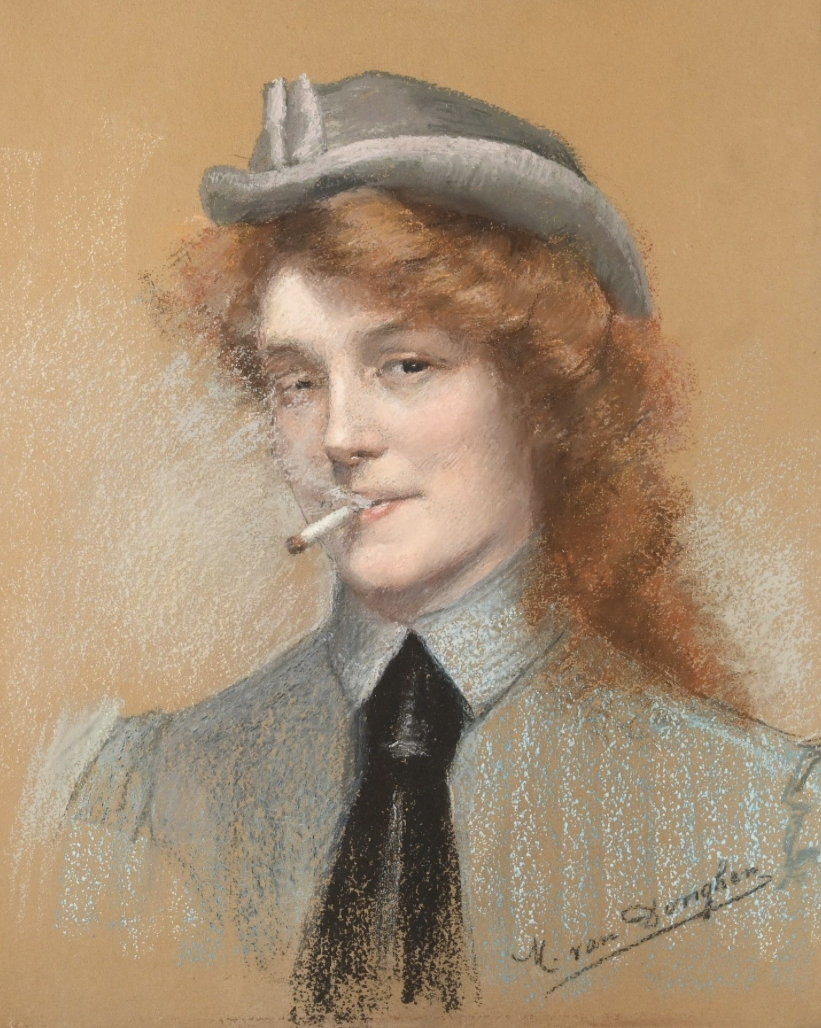
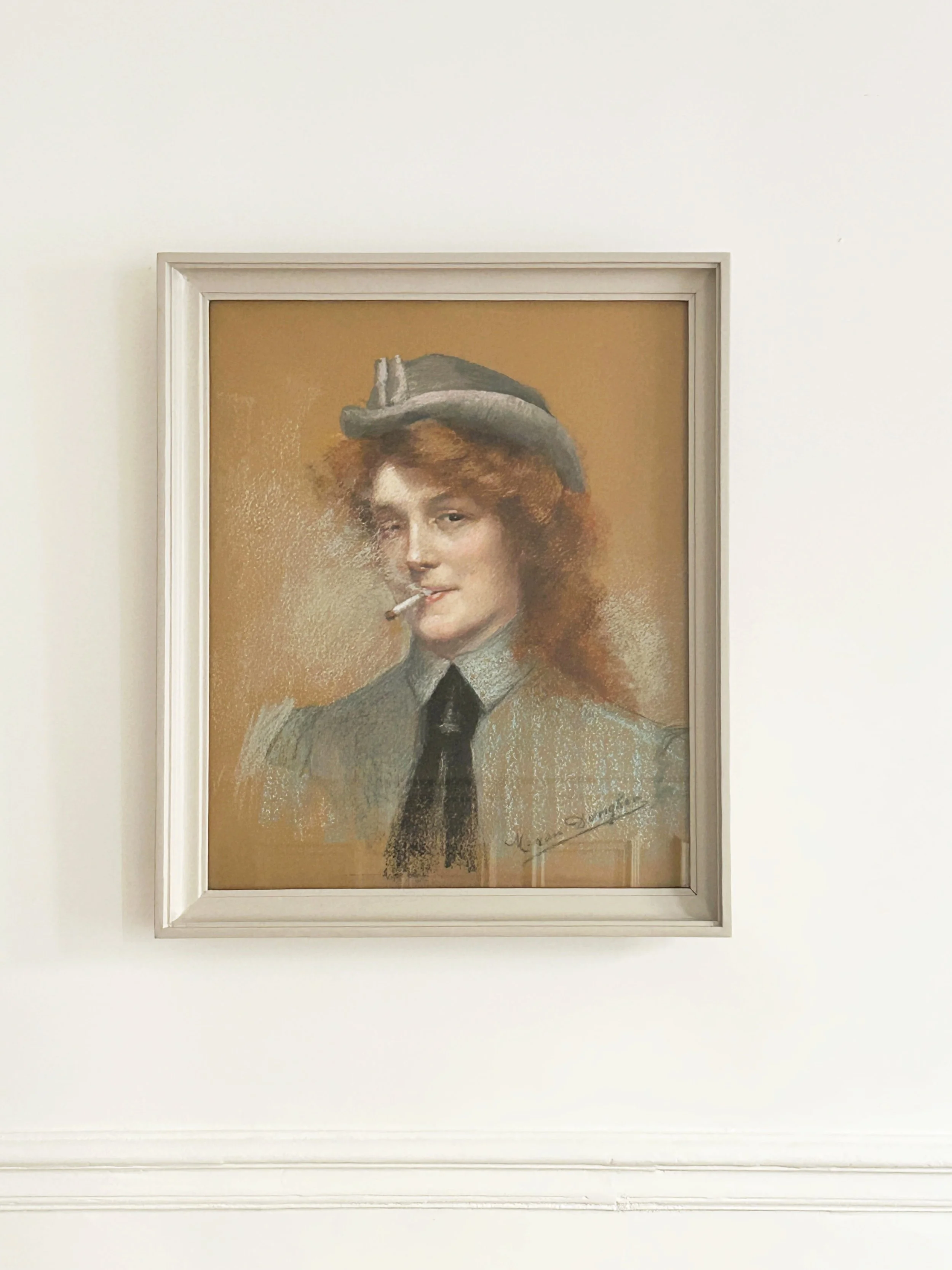
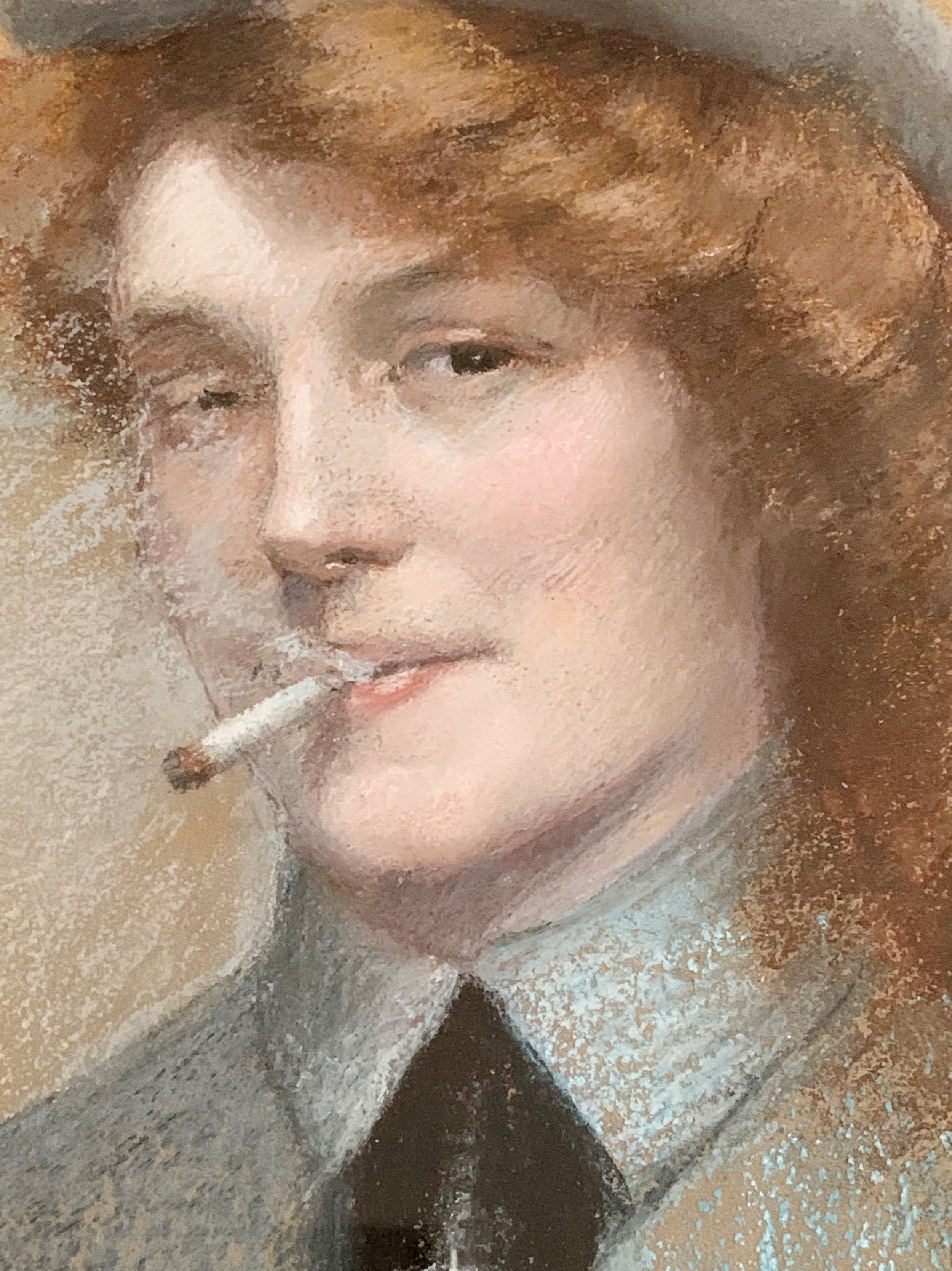
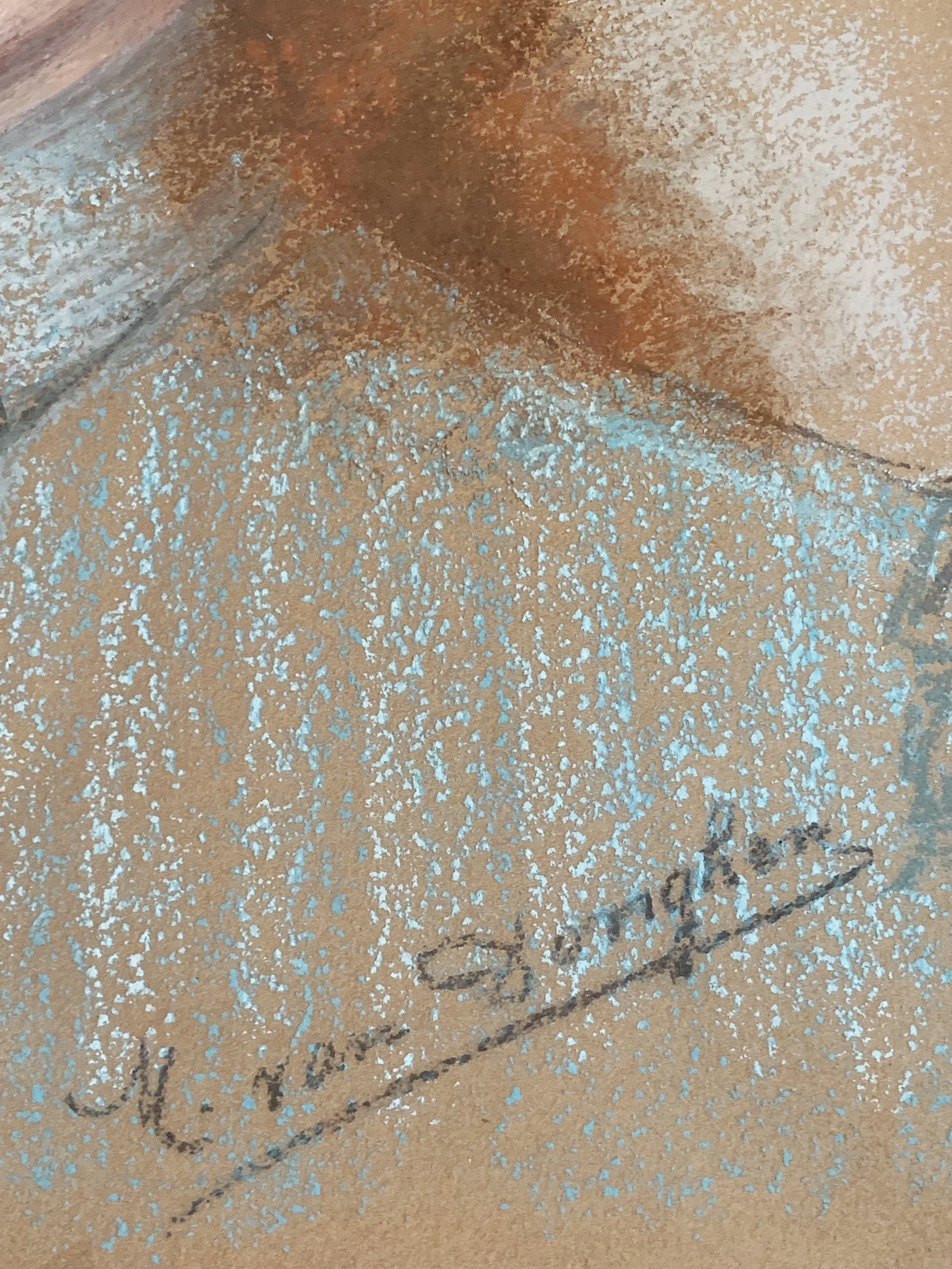
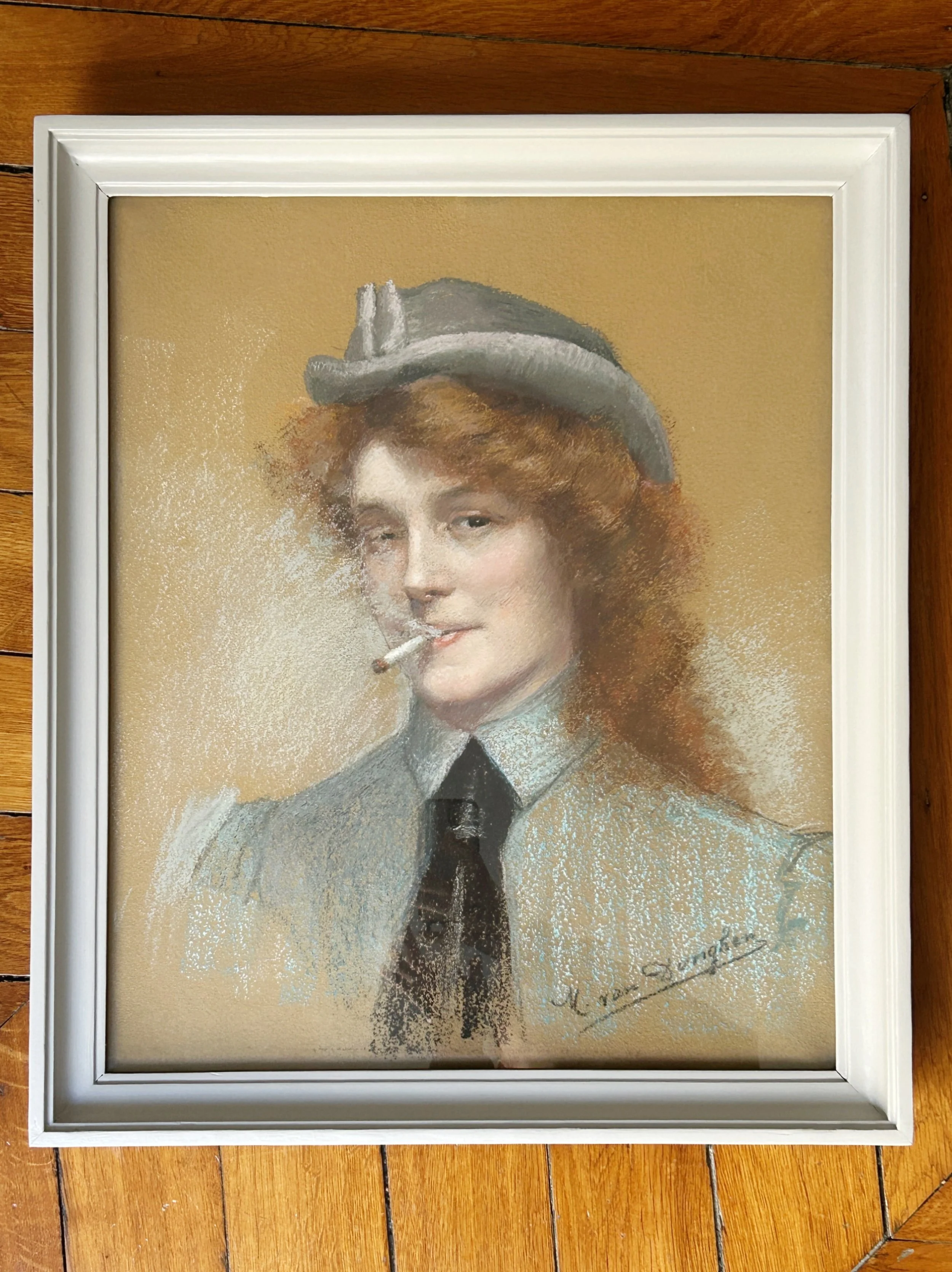
Mathilde MAUJAN VAN DONGHEN (1868-1960)
Portrait de femme à la cigarette, circa 1910
Pastel sur papier marouflé sur toile
Signé “M. van Donghen” en bas à droite
52 x 43 cm
Dans son cadre d’origine
-
Portrait of a Woman with a Cigarette, circa 1910
Pastel on paper on canvas
Signed "M. van Donghen" lower right
52 x 43 cm
Sold in its original frame
Née Mathilde Céline van Donghen en 1868 à Neuilly-sur-Seine, l’artiste épouse l’homme politique Adolphe Maujan (1853-1914) en 1898 (ancien député et sénateur de la Seine, sous-secrétaire d'État et fondateur du journal La France libre).
Mathilde Maujan van Donghen suit les cours de peinture de Benjamin-Constant (1845-1902), de Jules Lefebvre (1936-1911) ou encore de Jean-Paul Laurens (1838-1921). Elle expose pour la première fois en 1894 à l’occasion de la 41e exposition de la Société des amis des artistes de Seine et Oise à Versailles. En 1898, elle devient sociétaire de la Société populaire des beaux-arts. Son travail, et plus particulièrement ses portraits, est loué par le critique d’art Louis Vauxcelles dans un compte rendu du Salon des Artistes Français de 1908 paru dans Gil Blas : “ La Grand’mère de Mathilde Maujan van Donghen est un tout petit tableau d’un sentiment exquis de quiétude et d’une exécution large et franche, en dépit de ses dimensions exiguës. Le mouvement de la main qui tire l'aiguille est élégamment juste, le regard de l'aïeule expressif et doux. L’air emplit cette jolie toile d’une harmonie délicatement apaisée.”
Le portrait de femme au pastel que nous présentons s’inscrit dans l’iconographie du fumeur introduite dans la peinture de genre hollandaise au XVIIe siècle suite à l’importation du tabac en Europe depuis le nouveau monde. La figure de la femme fumant est quant à elle présente dans la peinture orientaliste du XIXe siècle qui met en scène des nus féminins enfumés.
Au lendemain de la révolution industrielle, la cigarette acquiert le statut d’objet reflet de la modernité, popularisé par des figures telles que Sarah Bernhardt (1844-1923). Les femmes de la bonne société française et anglo-saxonne incarnant la “new woman” adoptent ainsi la cigarette dans les années 1900 (ill.1 & ill.2). Elles l’arborent avec élégance et audace comme en témoignent les photographies et les portraits en vogue à la Belle Époque à l’instar de ceux de Paul-César Helleu (1859-1927) (ill.3). Après-guerre, la cigarette devient un des symboles de l’émancipation féminine, vantée par l’imagerie publicitaire.
Le modèle de Mathilde Maujan van Donghen revêt une tenue typique des années 1900-1910. Elle regarde le spectateur dans une attitude impertinente voire provocante, le visage enfumé par la cigarette nonchalamment portée à sa bouche.
ill.1 Photographe anonyme, Trois femmes fumant sur le pont d’un bateau, 1899-1900. / ill.2 Photographe anonyme, Femmes à la cigarette, c.1910. / ill.3 Paul César-Helleu, Madame Georges Hugo à la cigarette, pointe-sèche. / ill.4 Rudolf Schlichter, Margot, 1924, huile sur toile, Berlin, Stadtmuseum.
Bibliographie
Christine BARD, Les Femmes dans la société française au XXe siècle, Paris, Armand Colin, 2001.
Didier NOURRISSON, Cigarette. Histoire d’une allumeuse, Paris, Payot, 2010.
Louis VAUXCELLES, Salon des Artistes Français, 1908, Paris, Gil Blas, 30 avril 1908, n°10.413.
Born Mathilde Céline van Donghen in Neuilly-sur-Seine in 1868, the artist married politician Adolphe Maujan (1853-1914) in 1898 (former deputy and senator for the Seine, under-secretary of state and founder of the newspaper La France Libre).
Mathilde Maujan van Donghen studied painting with Benjamin-Constant (1845-1902), Jules Lefebvre (1936-1911) and Jean-Paul Laurens (1838-1921). She exhibited for the first time in 1894 at the 41st exhibition of the Société des amis des artistes de Seine et Oise in Versailles. In 1898, she became a member of the Société populaire des beaux-arts. Her work, particularly her portraits, was praised by art critic Louis Vauxcelles in a review of the 1908 Salon des Artistes Français published in Gil Blas: "La Grand'mère de Mathilde Maujan van Donghen is a very small painting with an exquisite sense of quietude and a broad, frank execution, despite its cramped dimensions. The movement of the hand pulling the needle is elegantly just right, the gaze of the grandmother expressive and gentle. The air fills this lovely canvas with a delicately soothed harmony."
This pastel portrait of a woman is part of the iconography of the smoker introduced into Dutch genre painting in the 17th century, following the importation of tobacco into Europe from the New World. The figure of the smoking woman is also present in nineteenth-century Orientalist painting, which features smoky female nudes.
In the aftermath of the Industrial Revolution, the cigarette acquired the status of an object of modernity, popularized by figures such as Sarah Bernhardt (1844-1923). In the 1900s, the women of French and American high society who embodied the "new woman" adopted the cigarette. They wore them with elegance and boldness, sometimes in cigarette holders, sometimes in their mouths, as shown by portraits in vogue during the Belle Époque, such as those by Paul-César Helleu (1859-1927). After the war, cigarettes became a symbol of female emancipation, popularized by advertising imagery.
Mathilde Maujan van Donghen's model is wearing a blouse with puffed sleeves typical of the 1900-1910 period. She looks at the viewer in an impertinent, even provocative attitude, her face smoked by the cigarette nonchalantly held to her mouth.




